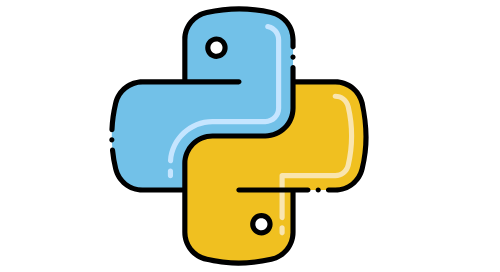Why Excel Isn’t Enough: The Rise of Python and R in Actuarial Modelling
In the world of actuarial science, Excel has long been the trusted companion of professionals. It’s user-friendly, widely available, and powerful enough for many financial modeling tasks. But in today’s data-driven world, Excel alone is no longer sufficient for the increasingly complex needs of actuaries. Enter Python and R — two open-source programming languages that are rapidly transforming the actuarial landscape.
Let’s explore why Excel is falling short, how Python and R are filling those gaps, and what this shift means for current and future actuaries.
📉 Limitations of Excel in Actuarial Work
While Excel remains a valuable tool, here’s why it’s no longer enough for modern actuarial tasks:
1. Scalability Issues
Excel struggles with large datasets. When you try to handle millions of rows or complex simulations, it becomes slow, unstable, and error-prone.
2. Lack of Automation and Reproducibility
Automating tasks in Excel using VBA (Visual Basic for Applications) is possible, but limited in scope. Moreover, tracking changes and maintaining versions of Excel models is difficult, which leads to transparency and reproducibility issues.
3. Poor Integration with Modern Data Sources
Actuaries today work with APIs, databases, and big data platforms. Excel does not easily integrate with these systems, limiting real-time data analysis.
4. Limited Statistical and Machine Learning Capabilities
Advanced predictive modeling, such as Generalized Linear Models (GLMs), time series forecasting, or neural networks, are not native to Excel. External add-ins exist but are often clunky and expensive.
📈 The Rise of Python and R: Why Actuaries are Switching
Python and R are not just programming languages — they’re ecosystems with vast libraries and communities. Here’s how they’re revolutionizing actuarial modeling:
🔹 Python: The Actuary’s Versatile Ally
✅ Strengths:
- Easy to learn: Python’s syntax is beginner-friendly.
- Great for automation: Use it for report generation, data cleaning, and batch processing.
- Data analysis & visualization: Libraries like
pandas,numpy,matplotlib, andseabornoffer powerful data handling. - Machine learning & AI: Leverage
scikit-learn,TensorFlow, orXGBoostfor predictive modeling. - Integration-friendly: Easily connect with databases, APIs, Excel, and cloud systems.
📌 Use Cases in Actuarial Science:
- Claims triage using predictive analytics
- Pricing models and reserving simulations
- Stress testing and capital modeling
🔹 R: The Statistician’s Powerhouse
✅ Strengths:
- Tailored for statistics: Built with data analysis in mind.
- High-quality visuals:
ggplot2andshinymake stunning visualizations and interactive dashboards. - Rich statistical packages: Ideal for regression models, survival analysis, and time series.
- Actuarial-specific libraries:
lifecontingencies,ChainLadder,actuar, etc.
📌 Use Cases in Actuarial Science:
- Life insurance product modeling
- Loss development triangles
- Time-to-event analysis in health insurance
⚖️ Python vs R: Which Should Actuaries Learn?
| Feature | Python | R |
|---|---|---|
| Learning Curve | Gentle | Moderate |
| Data Handling | Excellent with pandas |
Strong with data.table |
| Visualization | Good | Excellent |
| Statistical Modeling | Good | Best-in-class |
| Machine Learning | Excellent (sklearn, TensorFlow) |
Adequate |
| Community Support | Large and growing | Strong in academic/statistical circles |
📌 Conclusion: If you lean toward data science and automation, go with Python. If your focus is statistical analysis and data visualization, R might suit you better. Many actuaries today learn both to stay competitive.
🧠 Real-World Impact: How the Industry is Changing
The actuarial profession is evolving rapidly:
- Insurers are hiring data scientists alongside actuaries.
- IFRS 17 and Solvency II demand advanced modeling and analytics.
- Automation is reducing reliance on manual Excel models.
- Actuarial exams now include programming skills in some modules (e.g., CM2, CS1 in IFoA and IAI).
Companies like Swiss Re, Munich Re, and Aon are already using Python and R extensively for modeling, reporting, and machine learning applications.
🚀 Getting Started: Learning Python or R as an Actuarial Student
1. Free Online Courses:
- Python: Coursera, DataCamp
- R: R for Data Science Book, Swirl (R in RStudio)
2. Practice Projects:
- Simulate term life insurance pricing.
- Build a claims prediction model using open datasets.
- Create a dashboard for reserving trends.
3. Certifications:
- DataCamp, Kaggle, or Microsoft certifications in Python/R analytics.
📝 Final Thoughts
Excel will always be a foundational tool in the actuarial toolkit. But to thrive in an era of big data, automation, and machine learning, actuaries must move beyond spreadsheets. Python and R are no longer “nice to know” — they’re essential.
The future belongs to those who can code their way through complexity.






